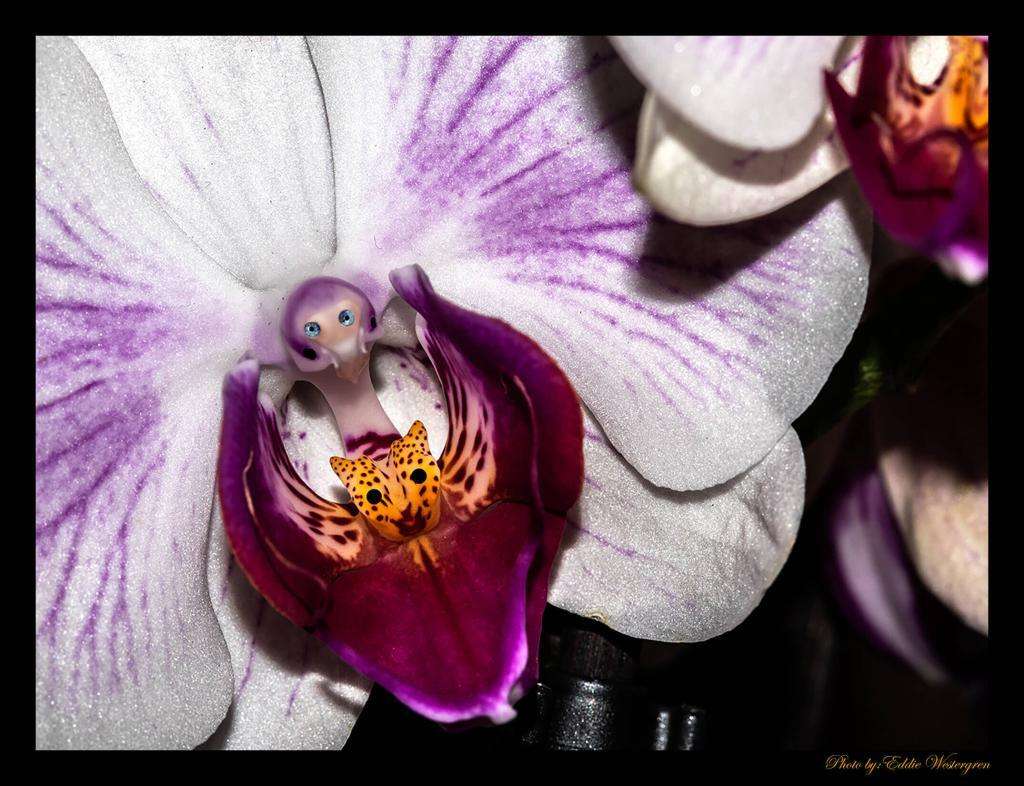
Orchid eating
This photo is a fascinating example of how our minds interpret visual information. The photographic illusion where an orchid flower appears to be an animal eating. Orchids are already known for their unusual shapes and striking details. In this case, the petals and central structures align in such a way that the flower looks less like a plant and more like a living creature. It’s caught in the act of feeding. At first glance, viewers may not even recognize it as a blossom. Instead, they might see the open “mouth” of a small animal, perhaps resembling a bird, an insect, or even a fantastical beast.
This illusion
works because of a psychological phenomenon called pareidolia, where the brain seeks familiar patterns in random or ambiguous images. Our minds are highly trained to recognize faces, bodies, and animal forms. So when the orchid’s lip and column resemble a beak or jaw, the rest of the petals are subconsciously interpreted as wings, limbs, or a body. Light, shadow, and angle further enhance the effect, making the scene look three-dimensional and alive.
Orchid eating in result is both
surreal and enchanting. A simple photograph of a plant transforms into a moment of imaginative storytelling. Instead of just seeing a flower, viewers might imagine a creature bent over its meal, chewing or sipping with intent focus. This merging of the natural beauty of a blossom with the suggestion of animal life creates a playful tension. It blurs the line between flora and fauna, making us question where perception ends and imagination begins.
Photoshop made
orchid eating image possible. Such images also highlight the creativity of photography. By carefully choosing the perspective, a photographer can invite people to see the world differently. Notice hidden faces or forms within ordinary subjects. In the case of the orchid eating illusion, the photograph captures not only the elegance of the flower but also the magic of human perception. It reminds us that reality is often filtered through our expectations, and that beauty sometimes hides in the most unexpected disguises. Through this illusion, the orchid becomes more than a plant: it becomes a doorway to wonder.